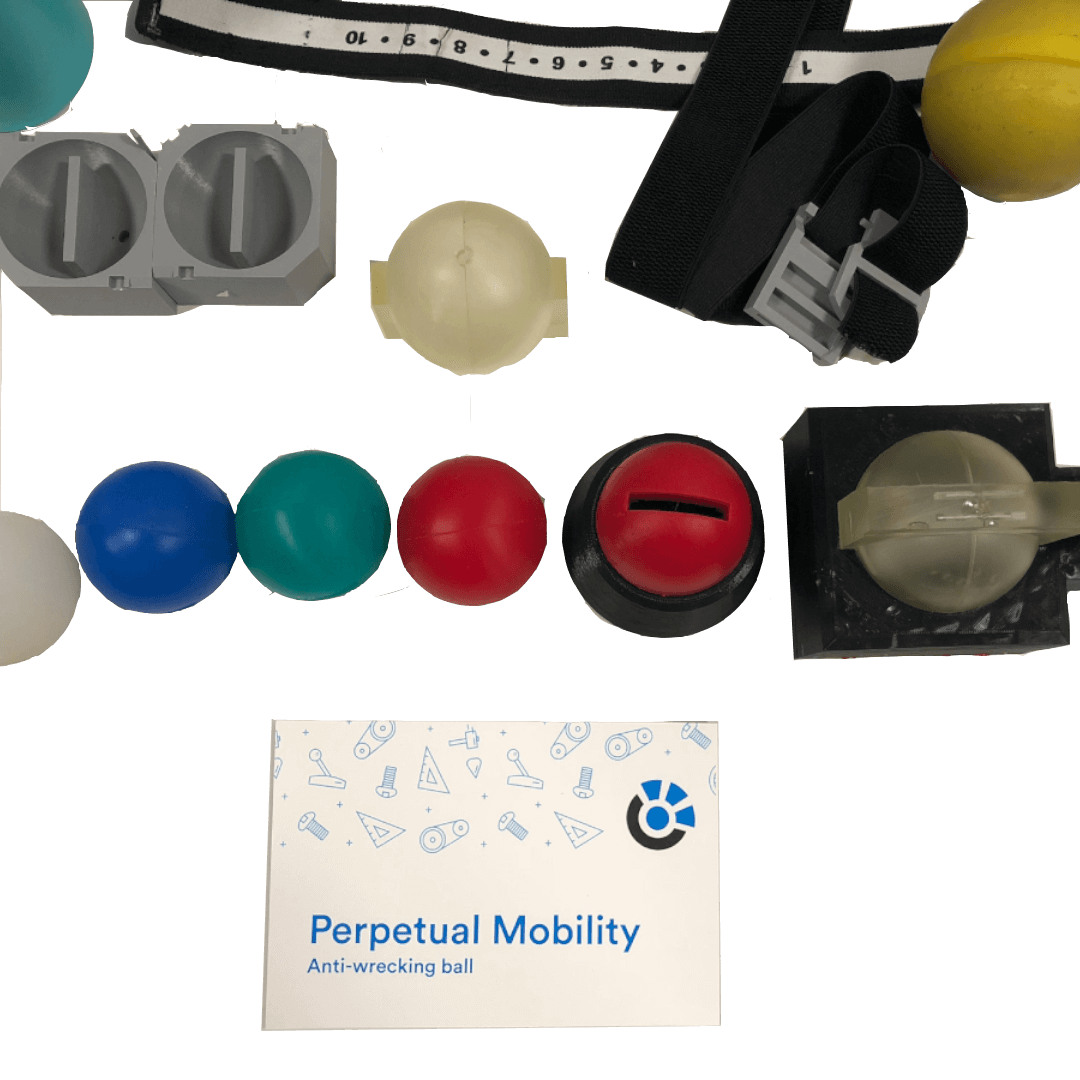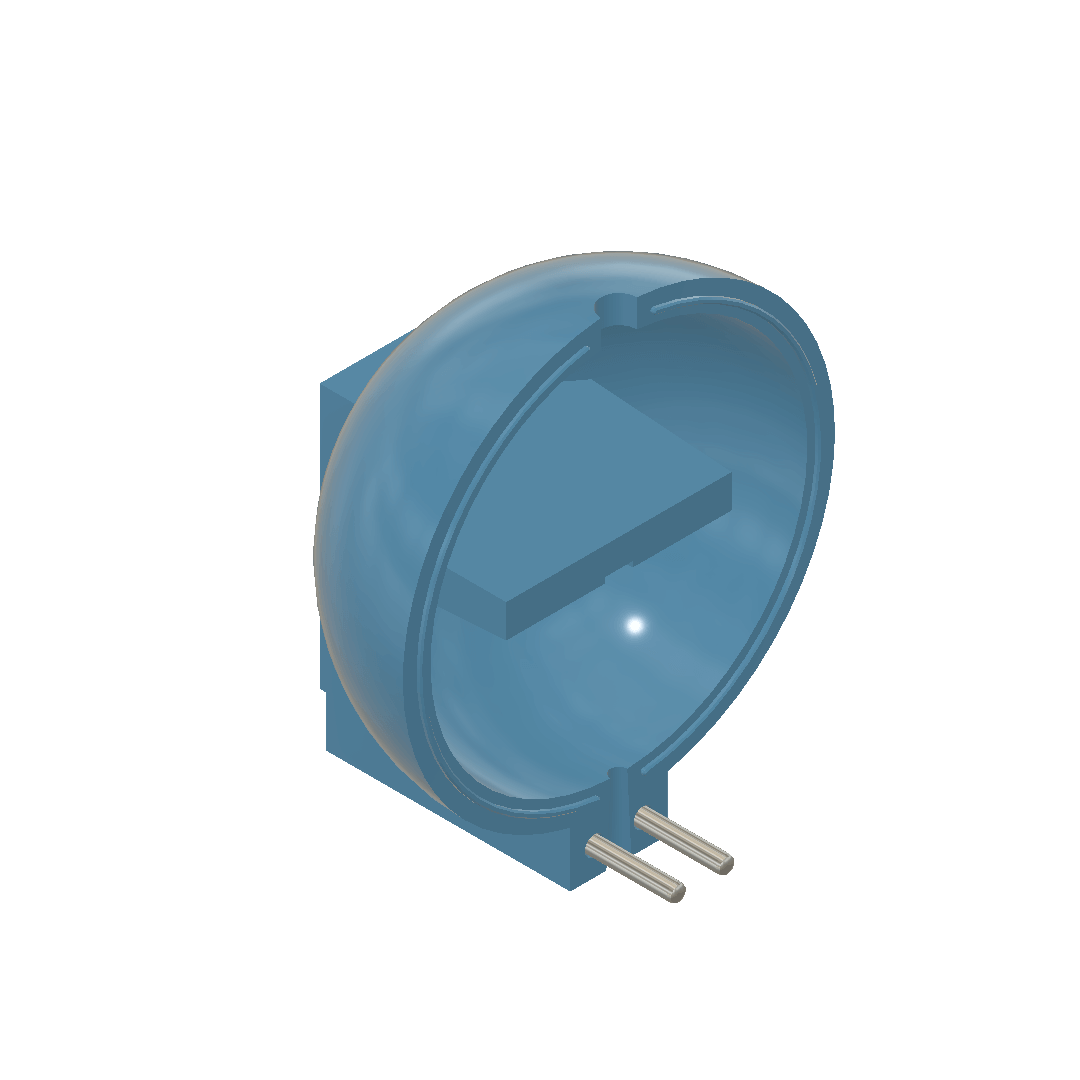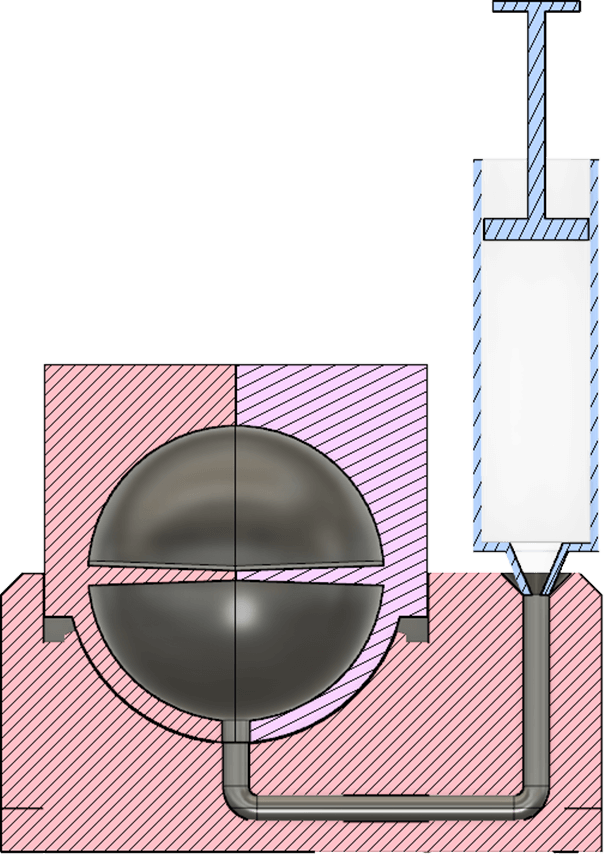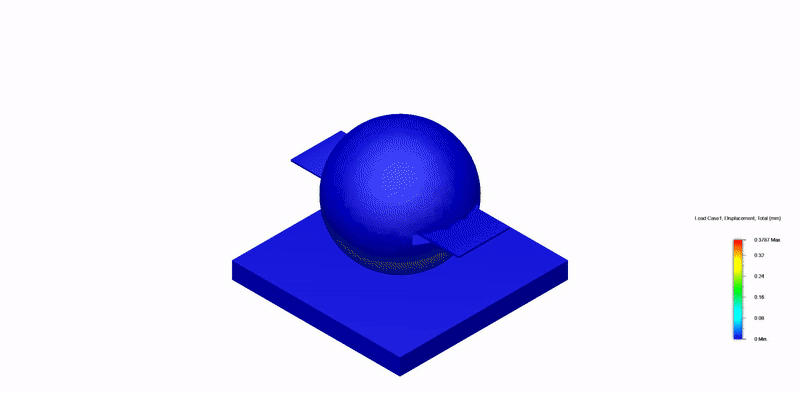Generate, Perpetual Mobility
Sep-Dec 2018
generate
consulting
fusion 360
What I learned
- Top-down modeling techniques.
- Implementing client feedback.
- Use of global parameters.
Im. 01, final_render
Our client wanted the physical therapy device to work as a stand alone device as well as with accessories. A band, floor, and hand device were all prototyped. The render was done in Blender, and to capture the real life material, a subsurface scattering node was used.
Im. 02, final_prototype
This shows the final prototypes that we gave to the client with the mold used to cast them. A Shore 60A urethane rubber was used for each ball, which was found to work best for casting and usage after testing multiple materials.
Im. 03, mold_half
To achieve a good surface finish and avoid banding from layerlines, the mold was made on a Form 2 SLA printer. With the limited build volume of the Form 2, a low material mold was designed specifically for the printer with alignment pins to register both sides.
Im. 04, mold_jig
After researching molding techniques, we decided to move forward with a bottom up injection process with vents on the top. To aid in this, a jig was designed to hold both the mold halves and the injection syringe. Since we wanted multiple injections, a parting plane bisects the lower tube
Im. 05, load_simulation
We wanted to relate what we were seeing in CAD to the real life behavior of the product, so we turned to simulation. This shows an exaggerated displacement when under a load of 100N, or roughly 20lbs, which would be close to what it would experience when strapped down.
Im. 06, fill_speed_simulation
Since the product would eventually be injection molded, a simulation helped us to better understand the manufacturing process. While the large volume is prone to voids, understanding the manufacturing process lent insight while refining the design.




